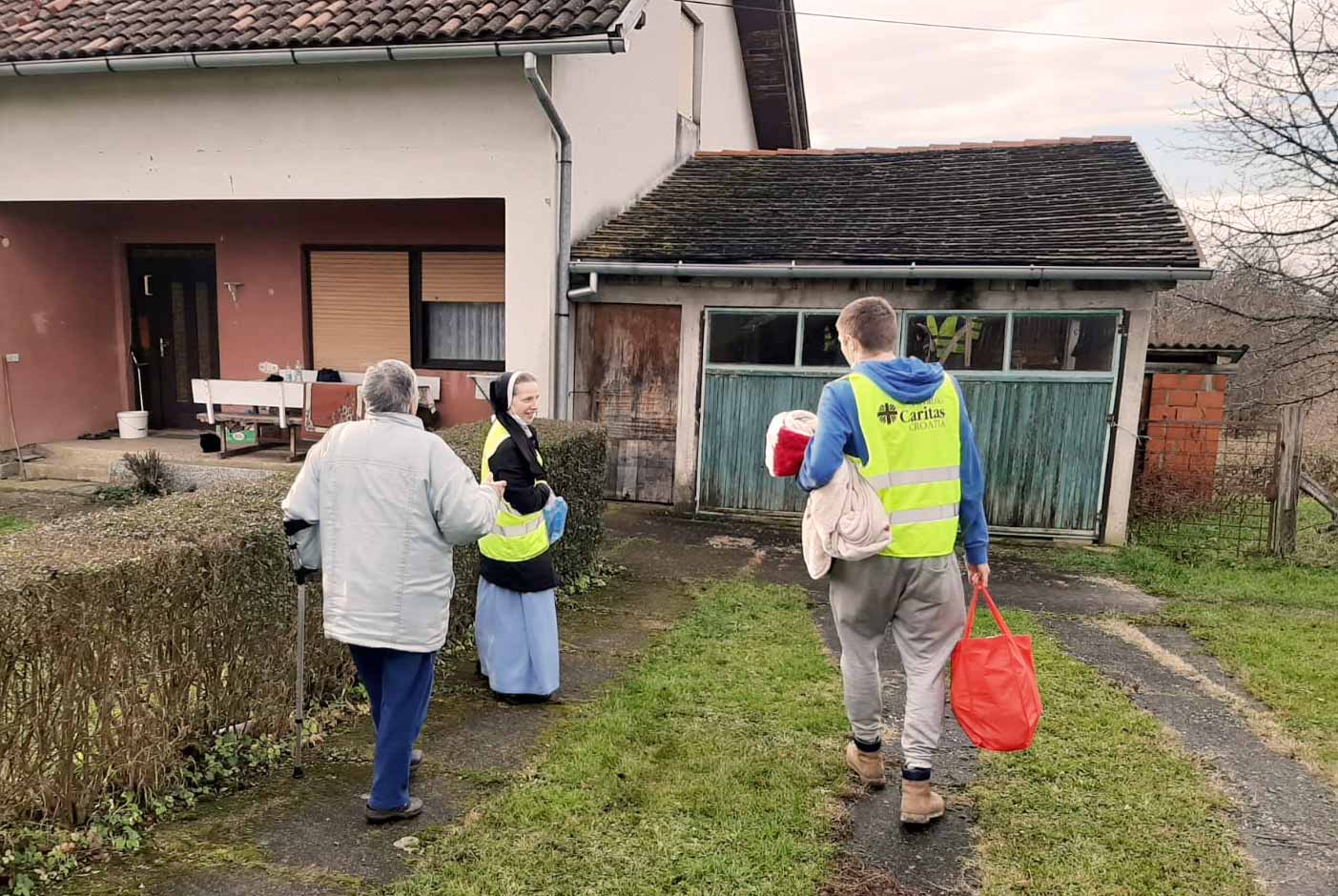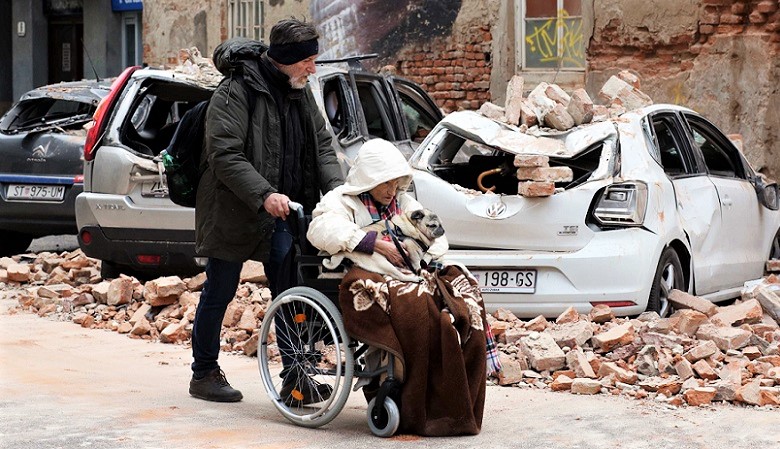There are an unlimited number of lessons to be learned by lending a hand. Through volunteering programs, tweens and teens can create community connections, learn the importance of giving back and develop essential life skills that will carry over into future careers.
It doesn’t matter whether your teen is already motivated, or they need community service hours for a college application or they’re reluctant to get involved — they’re sure to fall in love with the following programs.
We’ve compiled a list of fabulous local volunteer opportunities that are eager to engage your tweens and teens. The list is organized by interest: opportunities that help community members, feed neighbors, take care of the outdoors and help animals. Due to COVID-19 restrictions, many places have adjusted their volunteer schedules and requirements, and others may have temporarily paused their volunteer programs. Check each organization’s website for the most current information about its volunteer programs.
Opportunities to help others
Seattle Public Library, various locations
If your high schooler is a strong student academically, she or he can earn service-learning hours through the Seattle Public Library’s Learning Buddies program. Teens ages 14 and older can help tutor children in grades K–5 in math or reading, while learning communication, patience and time management skills.
How to get involved: Find a program near you by visiting the Seattle Public Library’s Teen Service Learning volunteer page.
WestSide Baby, Seattle
Help keep children safe, warm and dry by volunteering for WestSide Baby. Sort donations, bundle diapers, fill orders and more. Teens ages 14 and older can volunteer on their own; children under 14 need a parent to come along.
How to get involved: WestSide Baby hosts Teen Volunteer After School hours and other opportunities; find details on the volunteer page.
Update: Due to COVID-19 restrictions, WestSide Baby is currently unable to operate regular volunteer shifts. Check the website for further updates.
Treehouse for Kids, Seattle
Support youth in foster care by volunteering for Treehouse for Kids! High schoolers are free to volunteer without an adult. Tasks include sorting donations, preparing merchandise for the Treehouse Store and more.
How to get involved: Register online.
Update: Treehouse is hosting a limited number of volunteers. It has onetime and ongoing shifts available for individuals or small groups. Please see the website for more details.
Wallingford Community Senior Center, Seattle
Teens can build community across generations by volunteering at the Wallingford Community Senior Center.
How to get involved: Connect with older adults by filling out an application online.
Update: The senior center is operating online only and currently closed for volunteers.
City of Bellevue, various locations
Budding thespians might enjoy volunteering at Bellevue Youth Theatre. Or perhaps your teen wants to get involved in community issues through the Youth Link program? Whatever the teen’s style, the City of Bellevue has plenty of options.
How to get involved: Check out the City of Bellevue’s Teen Volunteering page for options, locations and more.
Jewish Family Service, various locations
Jewish Family Service’s mission is to help vulnerable families achieve “well-being, health and stability.” Volunteer opportunities range from helping with food drives; collecting gloves, socks and coats; and more. Teens are welcome, but volunteers ages 18 and younger must be accompanied by an adult.
How to get involved: Volunteer as a family by visiting the website.
Swedish Medical Center, Issaquah
Is your teen considering a career in healthcare? Swedish Medical Center offers volunteer opportunities for teens ages 14–18. Space is limited, but kids are encouraged to apply to be added to the queue.
How to get involved: Fill out the 18-and-under online application.
Kids Coming Together, Sammamish
Kids Coming Together provides free volunteering opportunities for kids in third grade through high school. Younger ages benefit from guided service activities spearheaded by high school “leaders.” Teenage leaders are there to participate, facilitate and help the younger kids have fun and make new friends.
How to get involved: Visit the Kids Coming Together volunteer page for details.
Help feed neighbors
Food Lifeline, Seattle
Volunteering duties at Food Lifeline are fun, easy and make a huge difference in the lives of people experiencing hunger. Volunteers must be age 14 or older and masks are mandatory.
How to get involved: Learn more and register at Food Lifeline.
West Seattle Food Bank, West Seattle
West Seattle Food Bank’s mission is to make sure neighbors don’t go hungry by providing access to safe and nutritious food. Volunteers must be at least 13 years old. Teens can also get involved by participating in a PCC food repackaging party.
How to get involved: Fill out a volunteer application online.
University District Food Bank, Seattle
The University District Food Bank has been helping prevent hunger in Northeast Seattle for nearly 40 years. Volunteer slots for teens are limited, but kids are welcome to volunteer with an adult family member.
How to get involved: Fill out a volunteer interest form online. Volunteer as a family by having the adult fill out the individual volunteer form and indicate that they’d like to bring a child with them.
Update: At this time, the food bank has restricted youth volunteers to just teens ages 15–17, and they must be accompanied by a parent or guardian. The food bank cannot accommodate youth under the age of 15 right now but look forward to welcoming more youth to volunteer as soon as possible.
FamilyWorks, Seattle
FamilyWorks provides food and services to families in need. High school students can volunteer at the FamilyWorks food bank during school breaks. Teens can also organize a food or clothing drive at their school or in their neighborhood.
How to get involved: View teen-specific volunteering opportunities online.
Northwest Harvest, Kent
Help sort and pack food for Northwest Harvest, which promotes healthy eating while reducing hunger. Volunteers ages 9–15 must be accompanied by a parent or guardian; teens ages 16 and older can volunteer independently.
How to get involved: Sign up to be a volunteer online. Note that if you are planning on volunteering alongside your teen, both you and your child need to fill out an application.
Nourish, Pierce County
Serving food to more than half a million people in Pierce County every year, Nourish Pierce County always needs volunteers to help out! Teens must be age 17 or older to volunteer on their own.
How to get involved: Create an account with Volunteer Up through the Nourish website to sign up for shifts.
Outdoor opportunities
Seattle Parks and Recreation Teen Service Learning, various locations
Seattle Parks and Recreation provides a wide range of free service opportunities. Teens can help restore trails, repair urban forest land, gain water-safety experience as a lifeguard and more. Teens are expected to be reliable and “proud of the work that they have produced.”
How to get involved: See the Seattle Parks and Recreation website for details. Teens are required to provide the necessary paperwork to document community service hours intended for school credit.
Update: Seattle Parks and Recreation is not currently accepting volunteers, but you can call 206-684-8028 and be added to its list in anticipation of volunteer services resuming.
Camp Fire, various locations
Teens in eighth grade through high school can volunteer as camp counselors at day camps and overnight camps for younger kids. Counselors help with programming that includes cooking, games, arts and crafts, nature and more.
How to get involved: Counselors must undergo specific training to learn leadership skills and other essentials involved in the job. Learn more about the various camps and training online.
Delridge Neighborhoods Development Association, West Seattle
The Delridge Neighborhoods Development Association’s Urban Forest Restoration program welcomes outdoorsy volunteers who are ready to learn new skills and engage in new experiences. Their volunteer opportunities focus on local forest and wetland restoration in West Seattle parks.
How to get involved: Visit the DNDA volunteer page for details. Note that kids under 18 must have a signed waiver before participating.
Washington Trails Association, various Locations
Washington Trails Association offers tons of outdoor opportunities. By attending a work party, teens can learn leadership and outdoor skills, earn service hours and make new friends — all while spending time outside. Or join a Youth Volunteer Vacation: an opportunity to spend a whole week outdoors while building and maintaining hiking trails.
How to get involved: Join a work party or learn more about the Youth Volunteer Vacation program.
EarthCorps, various locations
Help beautify locations all over the Puget Sound — from Everett to Tacoma — with EarthCorps! Volunteers ages 14–18 are free to volunteer without a parent or guardian as long as that adult completes a waiver for their teen to turn in on the day of the work event.
How to get involved: Sign up for a specific outdoor work event by visiting the volunteer calendar.
Update: Earth Corps is currently hosting volunteer events in Tacoma, but all other opportunities are on hold until the summer of 2021. Check the website for further updates.
Sign up for an outdoor work party through the Chip-In program with Metro Parks Tacoma. There are so many parks and gardens that need volunteer work; find a specific park or garden online to view volunteer options.
How to get involved: Register for an upcoming event on the Metro Parks website.
Wilderness Awareness School, various locations
Sign up to be a summer camp volunteer with Wildness Awareness School. They are currently looking for volunteers (ages 13–18) who are interested in working with children in the natural environment. Volunteers will assist lead instructors during the Nature Day Camps for one week or more during the summer.
How to get involved: Submit your application online and read more about the program on the website.
Opportunities that involve animals
Seattle Aquarium
Through the Seattle Aquarium’s Youth Ocean Advocates program, high school volunteers have the opportunity to participate in ocean conservation projects, including beach cleanups.
How to get involved: Teens need to be currently enrolled in grades 9–12. Spaces are limited and orientation is required. Visit their website for all the details.
Update: Currently, the aquarium is not accepting new volunteers for the program, but it hope to resume new volunteer training sessions in spring 2021. Check the website for further updates.
Woodland Park Zoo, Seattle
The primary role of volunteers at Woodland Park Zoo is to engage with guests, but dedicated teens 16 and older should know that existing volunteers have the opportunity to apply for other zoo positions, including roles involved in animal care.
How to get involved: Teens 16 and older can fill out a volunteer application online.
Update: Due to COVID-19, the zoo is not yet able to provide exact dates for 2021 sessions. Check the website for further updates.
Little Bit, Redmond
If you have a horse-obsessed teen 14 or older, send them to Little Bit, a Therapeutic Riding Center serving people with disabilities. Program volunteers help with grooming, tacking, leading horses and supporting riders during class. No previous horse experience is necessary, but program volunteers must commit to a regular 2-hour shift for at least six months. Looking for a shorter commitment? Help out as a Barn Team volunteer!
How to get involved: Visit Little Bit’s volunteer page for details.
Update: Little Bit has paused its volunteer program, but hopes to resume welcoming new volunteers when Washington state enters Phase 3 of the Safe Start plan.
Point Defiance Zoo & Aquarium, Tacoma
If your teen loves animals and the environment, encourage them to become a Camp Assistant or Zoo Guide at Point Defiance Zoo & Aquarium. Youth Volunteers must be between the ages of 14 and 18.
How to get involved: View High School Volunteer opportunities online.
The Humane Society, Tacoma and Pierce County
Tacoma and Pierce County teens ages 16 and older can work with animals by volunteering at the Humane Society. This is a six-month commitment, so make sure your teen has the time to give before they fill out an application.
How to get involved: Fill out a volunteer application online. Note: This is a popular opportunity and the Humane Society periodically closes the application process when full.



















